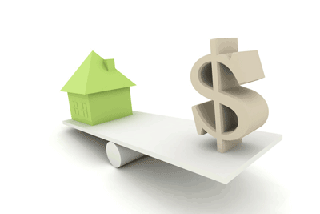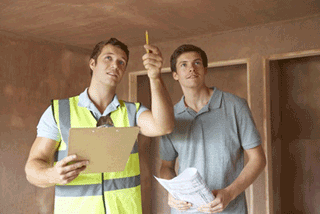Quote of the Week
“We’ve seen more confidence in the economy and consumer confidence surveys generally show people are more confident about the property market now and feel it’s a better time to buy.”
AMP Capital chief economist Shane Oliver
We Believe Recession Is Over: RBA
 Reserve Bank deputy governor Guy Debelle says the RBA now believes the country’s first recession in three decades ended in the September Quarter. “As best as we can tell, the growth elsewhere in the country was more than the drag from Victoria,” he says.
Reserve Bank deputy governor Guy Debelle says the RBA now believes the country’s first recession in three decades ended in the September Quarter. “As best as we can tell, the growth elsewhere in the country was more than the drag from Victoria,” he says.
Ahead of a highly-anticipated RBA board meeting next Tuesday – when the cash rate is likely to be reduced by a further 0.15 percentage points to 0.1% – Debelle told Senate estimates that “our best guess is it looks like the September Quarter recorded positive growth rather than slightly negative”.
“And as best as we can tell, the growth elsewhere in the country was more than the drag from Victoria, and possibly the drag from Victoria was a little less than what we guessed back in August,” he says.
The RBA will release a new set of forecasts in its quarterly Statement on Monetary Policy (SOMP) next Friday.
The bank’s August SOMP said “the effects of the heightened activity restrictions in Victoria are likely to offset the pick-up in GDP growth in other parts of the economy in the September Quarter”.
Affordability Best Since 2009: Moody’s
 Housing affordability is at its best level since 2009 because of low interest rates and falling house prices in the biggest cities, says Moody’s Investors Service.
Housing affordability is at its best level since 2009 because of low interest rates and falling house prices in the biggest cities, says Moody’s Investors Service.
“Housing affordability improved in Sydney, Melbourne, Brisbane, Perth and Adelaide over the year to September,” says Moody’s vice president Alena Chen.
House prices fell, on average, 1.5% over the five months to September, though prices are still up 3.2% over the year – and most the price decline has occurred in the two biggest cities.
On average, Australian households need 23% of their monthly income to meet mortgage repayments, compared with 25% a year ago and 26% on average over the last 10 years.
Sydney remains the least affordable, with new borrowers needing 30% of household income to meet repayments, compared with 25% in Melbourne. But borrowers in Adelaide and Brisbane need only 19% of their household income for their mortgages while Perth is the most affordable city, needing to just 15%.
Buyer Demand Outweighs Home Supply
 Nationally, residential sales are outpacing new property listings, vendor discounts are falling and it’s taking less time to sell a property, shows the latest CoreLogic data.
Nationally, residential sales are outpacing new property listings, vendor discounts are falling and it’s taking less time to sell a property, shows the latest CoreLogic data.
The median vendor discount eased across capital cities and regional areas in the three months to September, falling from 4% to 3.3% over the year. Also, it now takes an average of only 40 days to sell a property compared to 46 days a year ago, the data shows.
“The year-on-year comparison is highly relevant as a year ago the marketplace was emerging from a two-year downturn,” says Tim Lawless, CoreLogic’s head of research. “It does show that, as we emerge from the COVID-related lockdowns, the market seems to be a little bit stronger than that.”
In the four weeks to September 27, new listings rose 9% while total listings declined, leaving the ratio of home buyers to new listings weighted towards demand rather than a supply build-up, says Lawless.
This suggests that now is the right time to buy.
Renovators Have Been Busy In Pandemic
 Home renovators have been busy during the Covid-19 lockdown, pushing up the value of residential alterations and additions to the highest level in four years, according to the ABS.
Home renovators have been busy during the Covid-19 lockdown, pushing up the value of residential alterations and additions to the highest level in four years, according to the ABS.
ABS Building Approvals data for August found that the value of alterations and additions to residential buildings had risen by 7% to $784 million in August, the highest level recorded since April 2016.
The ABS noted that the value of total residential building also rose in August by 4%, with the results being largely attributed to the HomeBuilder scheme.
Other reasons include an increase in the number of people undertaking renovations during the lockdown, says a New South Wales renovation expert.
The Happy Renovator author, Werine Erasmus, says many Australians have chosen to use the downtime to start or finish renovation projects on their homes or investment properties.
Often, renovators don’t have the spare time to carry out projects, but the lockdown periods have given them an opportunity to do renovations, she says.
Tasmania’s Economy Leads: CommSec
 Tasmania has held on to the title of Australia’s best-performing economy for the third quarter in a row, according to the latest CommSec State of the States report.
Tasmania has held on to the title of Australia’s best-performing economy for the third quarter in a row, according to the latest CommSec State of the States report.
The October report found Tasmania leads across five of the eight economic indicators assessed: relative population growth, equipment investment, housing finance, dwelling starts and retail trade.
The ACT has moved up to second place with the strongest job market, together with the highest increase in housing finance, which was up 21% in the last year.
Victoria has dropped into third place, though it still ranks first on economic growth and construction work done, which is 27% above its decade average. South Australia has risen for fourth place., alongside NSW.
WA’s second placement in economic growth and equipment finance has been brought about by the resilience of the mining sector.
Among the eastern states, Qld was the only state or territory to record growth in retail spending with a 1.5% increase over the last year.




